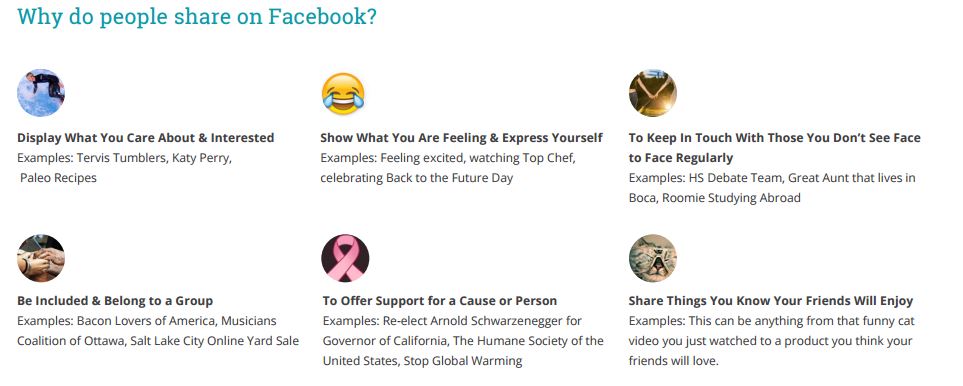Facebook Paid Ads & Organic Marketing for Brands

Social advertising is here to stay, but is your company making the most of the Facebook Paid Ads and organic marketing opportunity that these networks have created?
While some brands already have a well-developed social strategy, almost all retailers recognize social marketing as a channel of unrealized potential.
Social networks are the hub where consumers come to “hang out” online. When people gather and talk, conversations about products are bound to flourish.
The concept of using social networks to denote user-generated content on social platforms and ultimately spread advice from individuals on where to buy goods and services has skyrocketed, specifically in the vertical of retail.

Although social media may not be the first place people go to shop, it has become a source of rapid customer acquisition thanks to advanced targeting capabilities.
In the following blog post – we will take a closer look at Facebook Paid Ads & Organic Marketing and how it can help complete the loop for consumers with an interest in your company, brand or type of products.
According to AddShoppers, the leading onsite social platform for innovative retailers, although there are so many ways to communicate on Facebook, users tend to mainly interact with those they know personally. This is a trait that makes Facebook different from networks like Pinterest and Instagram where users commonly follow people they don’t know.
Because most members’ networks on Facebook consist of other people they know, there’s a trust factor that Facebook has that the other networks do not. They even have an “authentic name policy” in place to combat fake accounts and keep it more “real.”
Because Facebook is a highly personal network, we recommend strategizing around driving more conversations about your brand and products on Facebook. Your ultimate goal should revolve around turning your existing audience into brand influencers who will share your brand across their personal networks.
One exercise that we find valuable to generate more word of mouth activity on Facebook about your brand is to examine people’s primary motivations for sharing:

What’s the ideal image size for products shared to Facebook? Luckily, it’s a little simpler than Pinterest. The best image size for Facebook shares to display optimally in the News Feed is 1200 x 627px. If you need to provide smaller images, you can go as low as 470 x 246px.
Facebook uses Open Graph tags in a similar way to Pinterest to provide rich information to product shares like the price and description of the product. Now you see why we also recommend having both if possible.
Are you debating whether it’s more valuable to encourage your influencers to Share or Like your brand’s products or pages? Data shows that Shares are clearly more valuable than Likes when it comes to driving revenue.
In our 2014 Social Commerce Breakdown report, we found that Facebook shares were worth, on average, $0.80 in revenue―340% more valuable than Likes! In addition, traffic coming from shared products converted 544% higher than traffic from Liked products.
Are you struggling to gain enough interaction with your Facebook sharing buttons? Try incentivizing sharing from your site. For example, run a “share for free shipping” campaign― it’s a great way to boost social word of mouth sharing plus drive conversions at the same time.
Another excellent way to encourage sharing is by asking your shoppers to share their purchase to their social networks. At the time of purchase, shoppers are 30% more likely to share, so use this to your advantage.
Don’t forget to keep track of and interact with your top Facebook influencers―individuals that share often on Facebook and drive sales from their sharing activity. They can be a valuable asset in expanding your reach. Try contacting them with a mutually beneficial opportunity to share their relationship with your brand. You could incentivize them with exclusive deals, early access to new products, or a special coupon code that they can share with their network.
Want to learn more about influencer marketing, check out our Q&A: “How Liquipel Accelerated Their Brand to Big Box Retail in Less Than 6 Months“
Using Facebook Ads helps retailers reach their local and extended audience, everyday and everywhere. Facebook advertising is a must have for any business or brand trying to engage with new (or existing) customers. Understanding the Facebook market and it’s advertising platform’s best practices can help retailers maximize their presence on the social media, build credibility, and increase revenue.
 “Make sure you are doing as much as you possibly can to connect the dots from social to purchases,” Peter Messmer, Director of Growth at AddShoppers said.
“Make sure you are doing as much as you possibly can to connect the dots from social to purchases,” Peter Messmer, Director of Growth at AddShoppers said.
“Don’t expect social traffic to quickly convert — if you haven’t already, you must develop a rock solid strategy for capturing “micro-moments” from social visitors, such as account registrations, email opt-ins, and retargeting pixels.”
Facebook ad clicks are increasing 70% year over year, and ad click-through rates are increasing 160%. This is great news for Facebook advertisers. The lowest hanging fruit for advertisers will be remarketing (retargeting people in your existing sales funnel).
The conversion type retailers opt into will largely depend on who they target and the goals of their campaign. According to our in-house Facebook experts, approximately 98% of retailers are going to have to pay if they want to see good results, but that is not to outrule the power of an organic post (that can still go viral).
In an interview with CPC Strategy, Jakob Bechgaard, Digital Marketing Manager at Knockaround, LLC. voiced similar thoughts:
“Initially the organic side of Facebook was a huge driver of revenue, especially back in the day before Facebook changed the algorithm. Companies had more exposure and there was a lot less competition. Now, there are so many businesses competing for inventory,” Bechgaard said.
“As Facebook changed the way its algorithm and advertising worked – we got less and less exposure from our organic Facebook efforts. This was when our Facebook paid advertising efforts became really important.”
“In order to get the same exposure we once had on the organic side, we had to invest and optimize our paid marketing efforts. Unfortunately, on Facebook you can’t always get that exposure for free anymore.”
When it comes to paid Facebook advertising, retailers have a number of options. Facebook Dynamic Product Ads are designed to help businesses advertise their entire product catalog across all consumer devices.
With Product Ads, retailers have another avenue to promote inventory, while Facebook users can discover more relevant products in a native setting. From awareness to purchase, advertisers can cater to the user’s journey through a variety of targeting options including:
It’s no surprise that display-based product advertising has been an increasingly effective revenue-driver for retailers in recent years. The introduction of Facebook Product Ads falls directly in line with the trend of display-based product advertising.
Although it seems unlikely Google Shopping will suffer in response to Facebook’s latest development, it does warrant a new conversation within retail organizations.
To learn more, check out , “The Retailer’s Guide to Social Commerce Channels”
According to AddShoppers:
1. Huge Results through Facebook Messenger
Facebook Messenger is huge, and now it’s possible to create ads that link directly to a conversation with your brand. The kicker? You can now use a bot to automate these conversation and help the customer consider and make a purchase.
We expect to see brands starting to test this feature out, and results worth tracking. As we move towards an era where more and more customers demand personalization and 1 on 1 attention (plus ever-increasing mobile marketshare), this is certainly a promising addition to Facebook’s repertoire.
 Ryan Bates, CPC Strategy’s Digital Production Coordinator also adds, “Unlike humans, chatbots are available 24/7 to answer questions and provide support.”
Ryan Bates, CPC Strategy’s Digital Production Coordinator also adds, “Unlike humans, chatbots are available 24/7 to answer questions and provide support.”
“Most retailers don’t have 24/7 support to assist current and potential customers, meaning some sales could slip through the cracks. Chatbots could help fill that gap by answering questions any time of the day.”
2. Facebook Canvas for eCommerce
Bigger brands are starting to test this format out and, if nothing else, we’re excited to see what creative solutions they come up with. With the increased level of interaction available and engagement possible, we anticipate hearing stories of some hugely successful campaigns leveraging Canvas.
3. New and improved Facebook Offers
Brands and retailers that are more promotionally driven will be experimenting with the updated Facebook Offers platform in 2017. What’s updated? Well, they’ve redesigned the user experience to be optimized for mobile devices, which is obviously a smart move given their massive mobile user base.
It’s also built to work in-store (so you can pull out your smartphone at the register and redeem your Facebook Offer), so omni-channel retailers can leverage it for both online and offline sales.
For more on Facebook paid ads, email [email protected]
